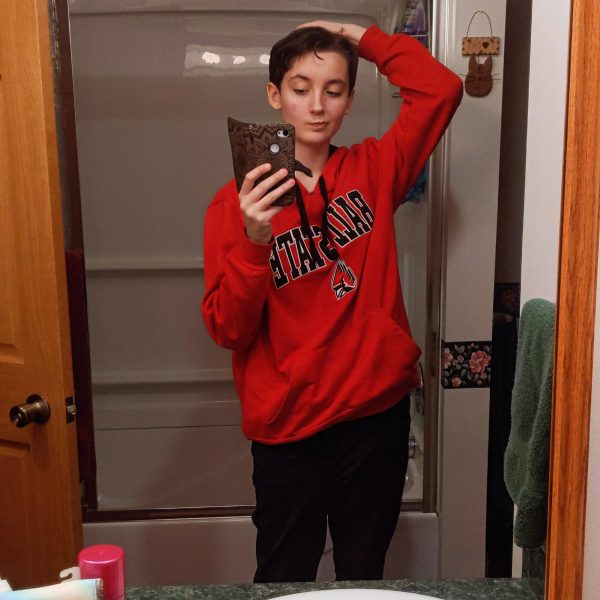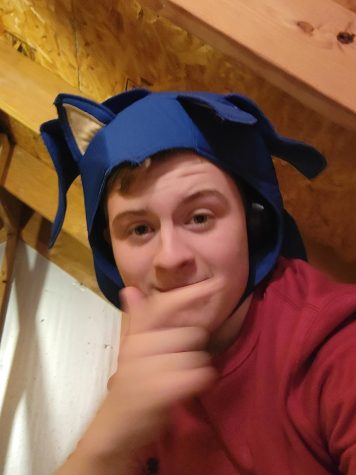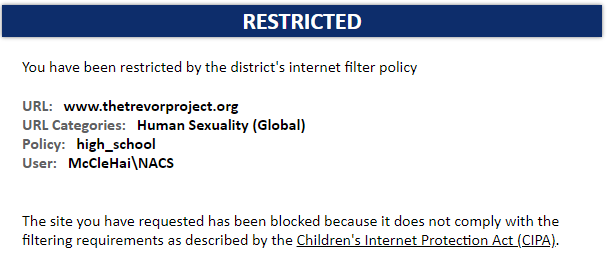NACS switches web filter from Lightspeed to Content Keeper
Despite Lightspeed being the district web filter for over a decade, things changed this summer.
With Lightspeed, there were always problems with the filter, such as when where NACS went without internet for two months. It would turn on and off, there would be internet one moment, then it would be down the next. Often, the internet would be incredibly slow.
Lightspeed became Snailspeed.
With the district growing rapidly as more people move here, and more students arrive in the district, the web filter needs to be able to handle the extra pressure.
Lightspeed is a national leader in web filters and is most likely the largest web filter there is. However, in the last 6-10 months, their management changed. With that change of management, their product and vision changed.
“They shifted from a web filter to a conglomerate business, acquiring all kinds of other products, and their core of doing web filters changed,” said Chief Technology Officer of the tech department Seth Slater.
The current web filter, Content Keeper, has been around for about 5 years, and functions as the replacement for Lightspeed.
One of the main reasons for switching to this filter was the advantages for the tech department.
Content Keeper enables the tech department to see what’s happening on the laptops in real time, which helps to resolve tech problems easily. Additionally, it takes what lightspeed could do, and does it faster.
The tech department also is able to monitor potentially questionable searches, which helps give them insight into student psychology, behaviors, and issues as well as academic needs.
Despite these advantages, multiple students have mentioned that the web filter seems a bit excessive, with the main complaint being that Wikipedia and other important websites keep getting blocked.
Seth Slater, who goes by many names, such as webmaster, tech department dude, or simply Seth, questions, “whether it’s LGBTQ or ESPN, is there any educational value?”
Any website that isn’t educational gets blocked, but the problem with that is more than 500,000 new websites are created every day. This makes it so that no one person or group can possibly sort through all of them to see if they’re educational or not.
Therefore, any new sites that are created are filed as “Non-managed” until the tech department goes through them. Any previous sites that were created have either been blocked or unblocked automatically by the Content Keeper filter.
“It all depends on what the government files the sites under. There’s thousands of new sites made every day, so it’s very hard to monitor all the harmful sites that were made,” said Principal Cleve Million. “Sites are blocked if they have chat messaging features, because we have no way to monitor who’s on the other end of the line. It can be another high schooler, it can be a random stranger. We really have no way to make sure kids are safe, so that’s why it’s blocked.”
From an outside perspective, this web filter can seem prejudiced against non-straight people, blocking things such as LGBTQIA+ sites and the Human Rights Campaign, and keeping multiple hate sites unblocked, which will rename unnamed for student safety purposes until the tech department can deal with them.
The reasoning behind this is because of how they’re categorized. Every website that’s blocked falls under a category, whether it be Human Sexuality, Religion, Violence/Undesirable, Non-managed, or some other category.
A large LGBTQIA+ organization, The Trevor Project, which provides crisis services to members of the LGBTQIA+ community, is blocked, along with 11 other well-known LGBTQIA+ sites, such as GLAAD, GLSEN, Gay Straight Alliance, and Ali Forney Center, which provides youth shelter services for LGBTQIA+ kids.
The majority of these sites are categorized as Human Sexuality, which, under federal law, is automatically blocked.
The law that states filter requirements, Children’s Internet Protection Act says that anything that could be harmful to minors is blocked, including “any picture, image, graphic image file, or other visual depiction that taken as a whole and with respect to minors, appeals to a prurient interest in nudity, sex, or excretion; depicts, describes, or represents, in a patently offensive way with respect to what is suitable for minors, an actual or simulated sexual act or sexual contact, actual or simulated normal or perverted sexual acts, or a lewd exhibition of the genitals; and taken as a whole, lacks serious literary, artistic, political, or scientific value as to minors.”
This means sites that reference anything that has to do with human sexuality, whether it be referencing or showing anything that has to do with sex, is blocked.
“Anything that is outside of the normal sexual boundaries, which, like it or not, is homosexuality or any LGBTQ thing, or any orientation outside of the normal, according to federal law, the way it’s written, or anything that doesn’t have a purely academic value, is blocked,” said Seth Slater.
Many of the hate sites were left originally unblocked and didn’t fall under the Human Sexuality label because they support the normal sexual boundaries, which is straight, cisgender people.
It’s not the tech department that’s taking sides and purposefully blocking anything that’s not straight, it’s the government.
The tech department has local control over what is and isn’t allowed through the filter, but in order to unblock most sites, they have to go to the principals for them to make the decision. The administrators are the ones hearing from families, students, the school board, and the community, so they decide based on community standards on what filters should be adhering to.
The LGBTQIA+ is considered a controversial topic to most, so in order to not take sides and turn people against the school, which proved difficult during the mask mandate decision in schools, the administration has to follow public opinion, and what will cause the least amount of public pushback.
The tech department is always open to suggestions about changes to the web filter from students and staff if they’re approached in person or emailed at webmaster@nacs.k12.in.us.
“I think unfortunately we live within the defaults of the system,” said Slater. “It’s up to us to collectively say, should it be, or should it not?”

Hi, my name is Jack, and I'm a senior. I'm a writer on the Charger Online, a songwriter, and a person who's too fruity for homophobes to handle. I'm also...

Keagan Mould is a Senior at Carroll High School, and an undergraduate at Purdue Fort Wayne. He likes to play video games and watch anime in his free time. ...





